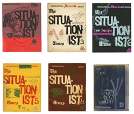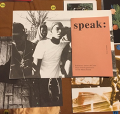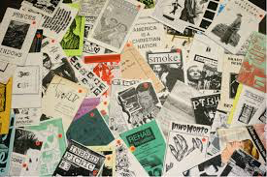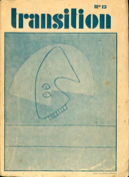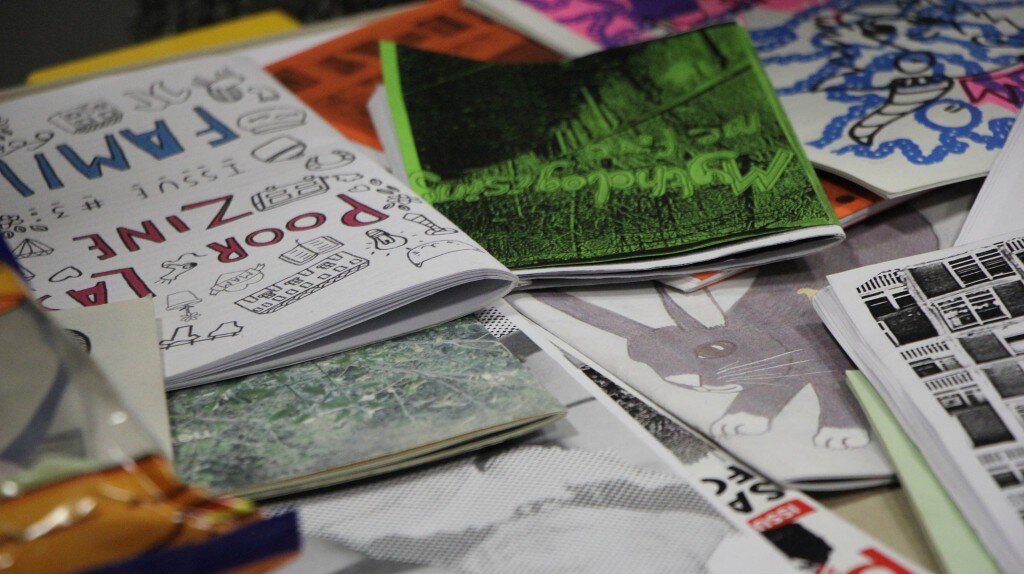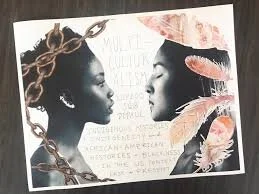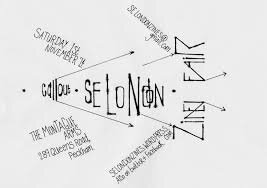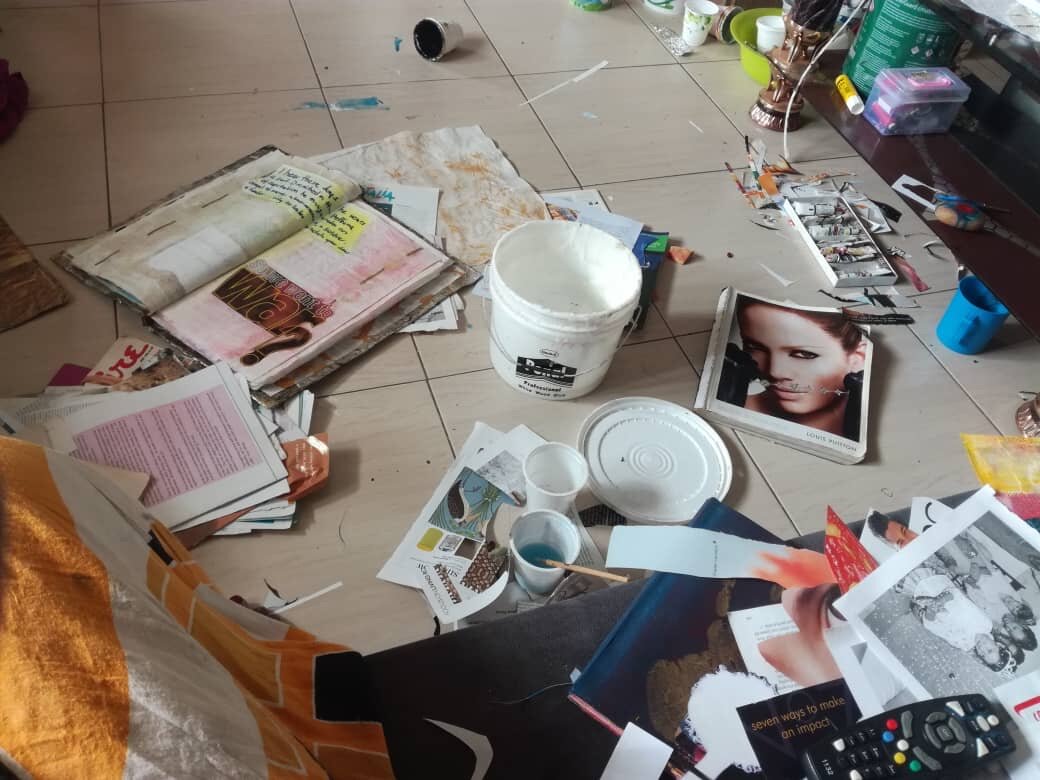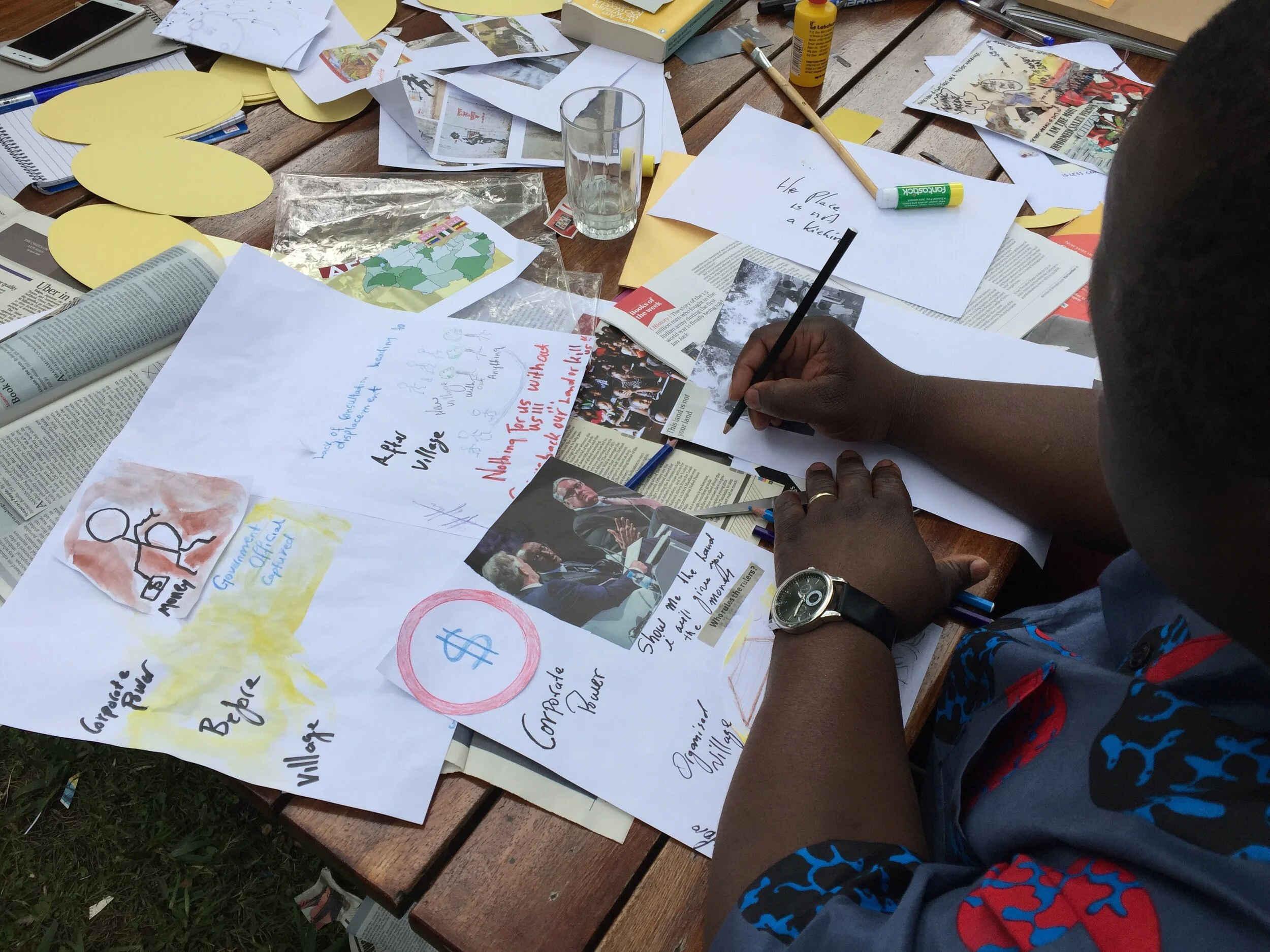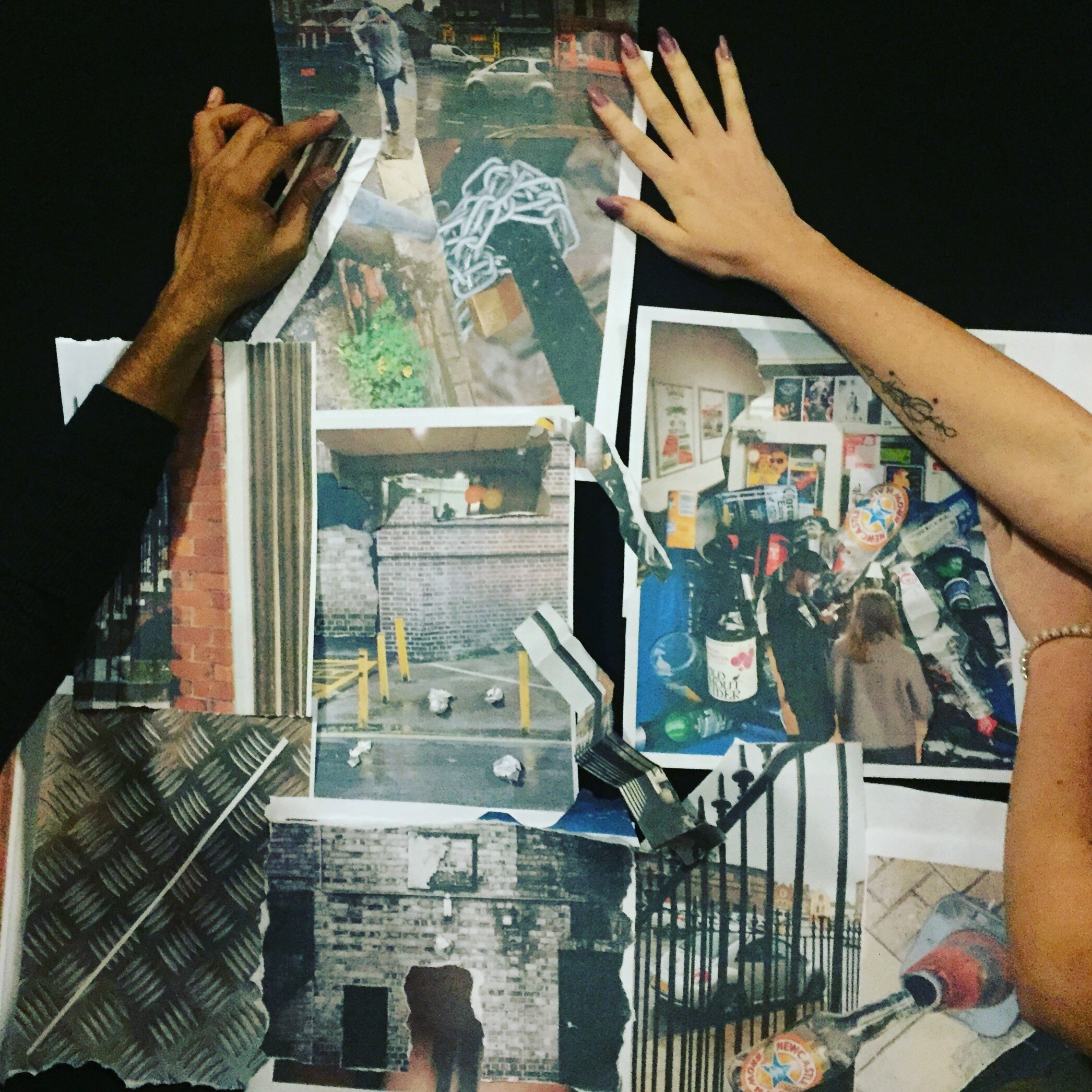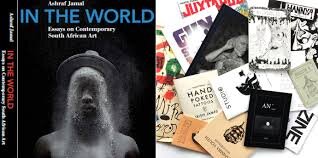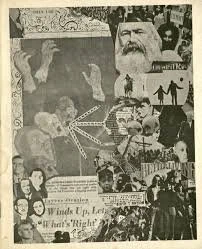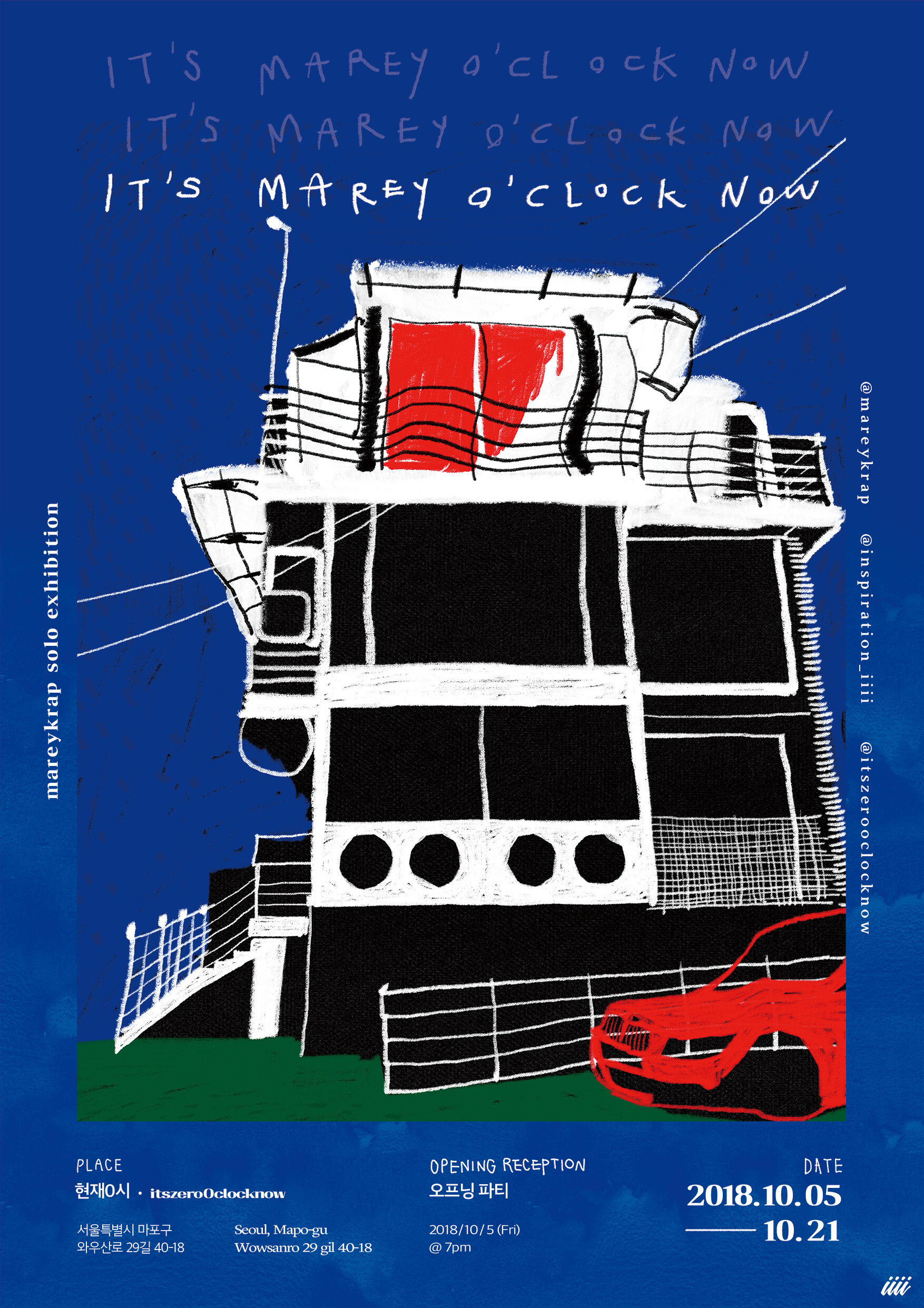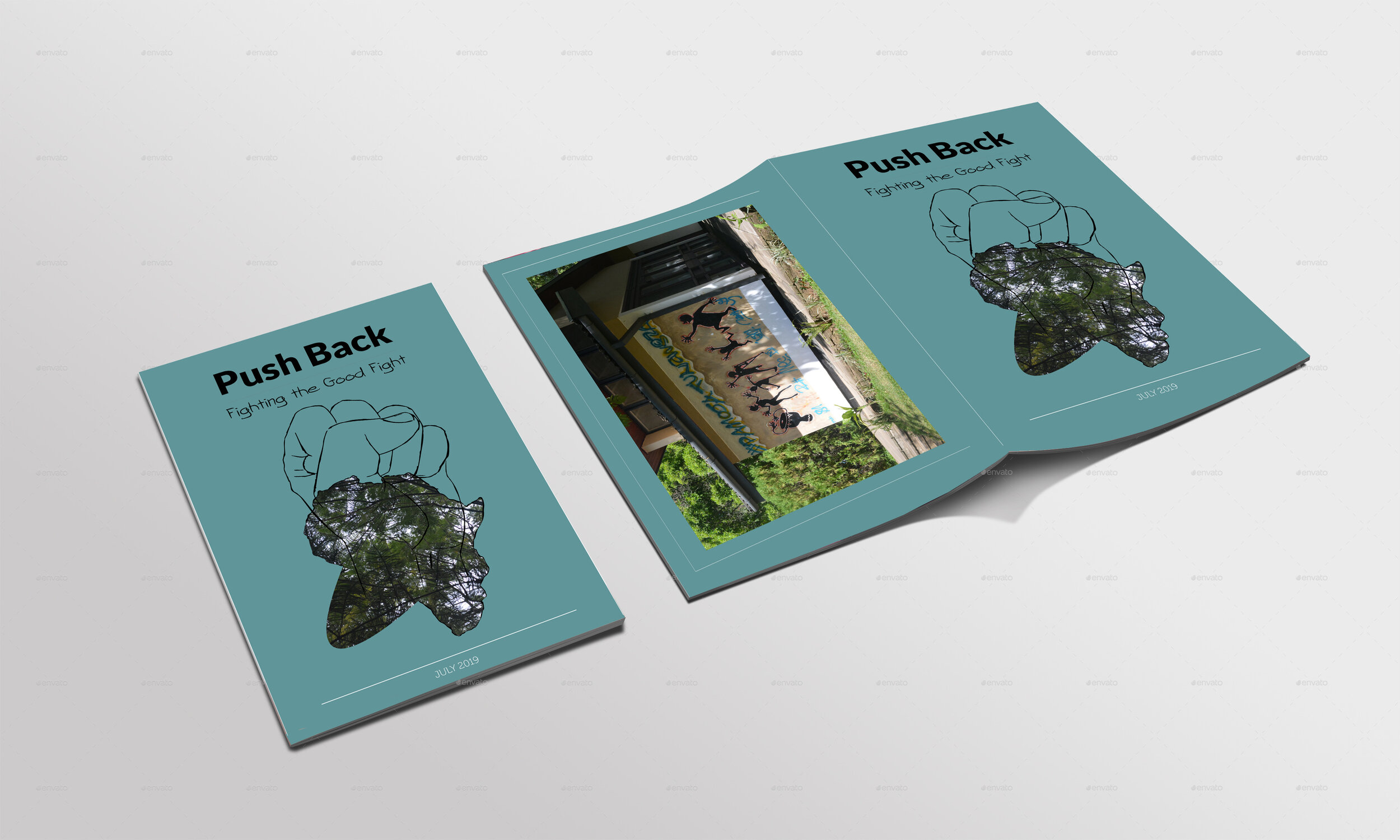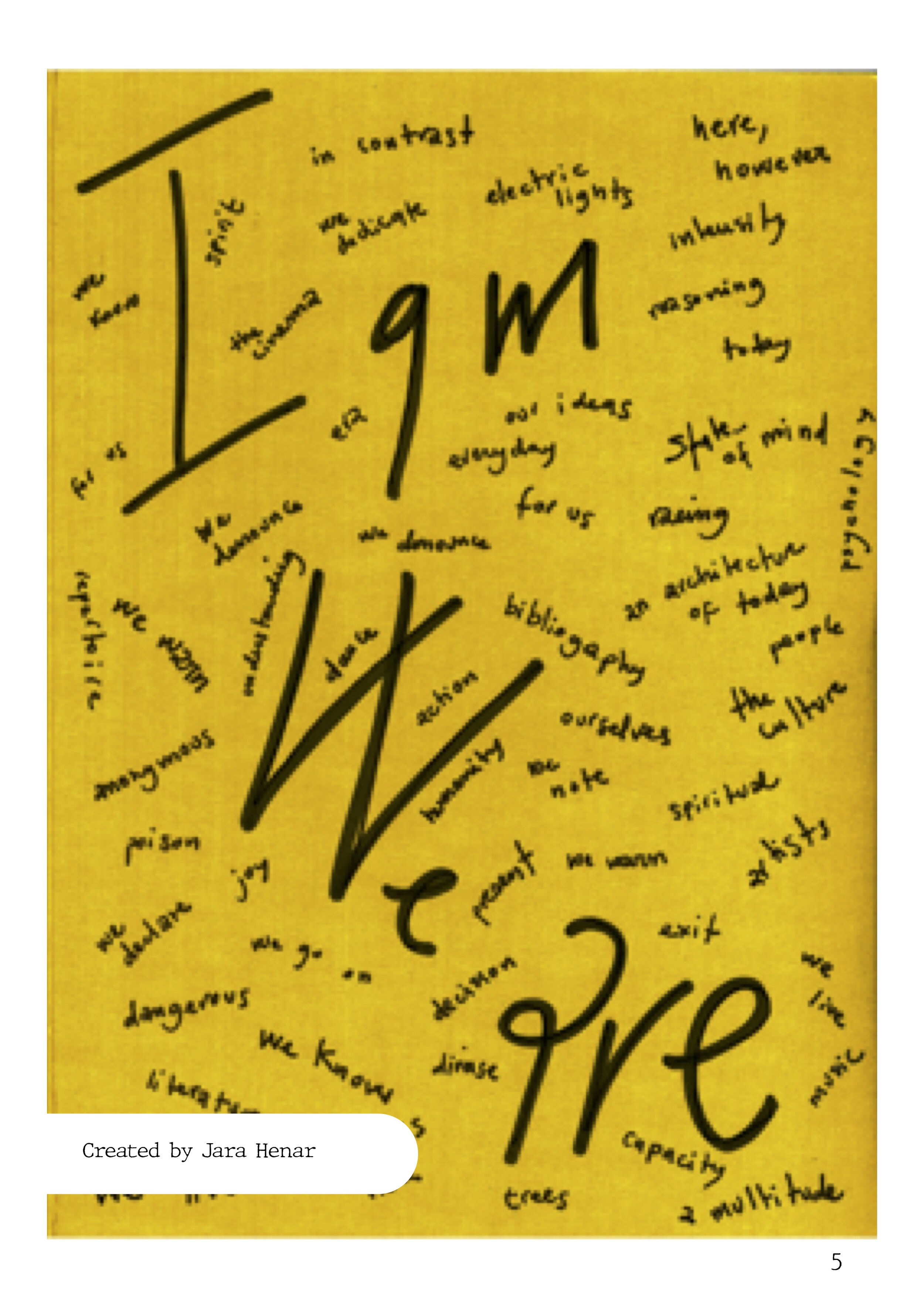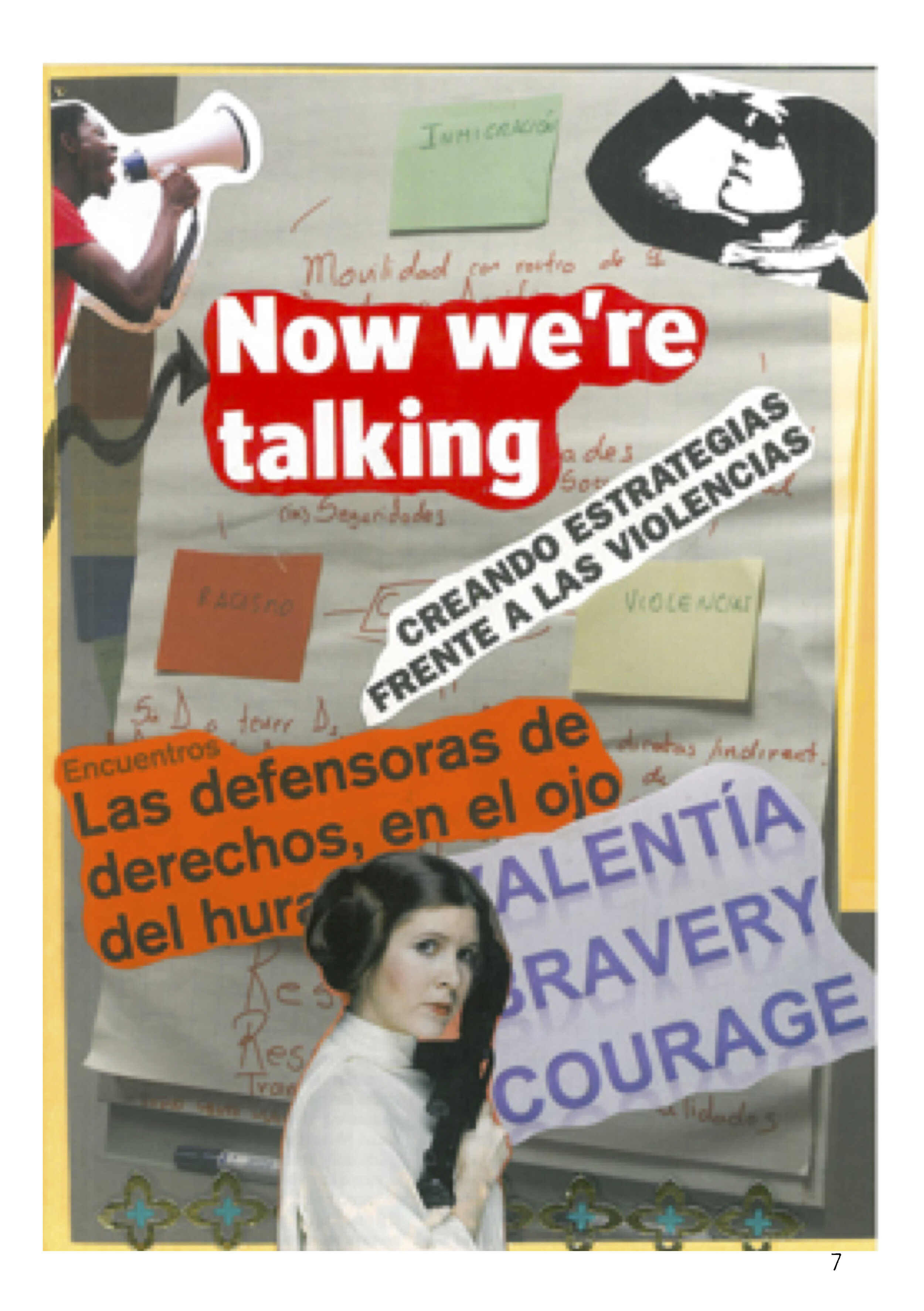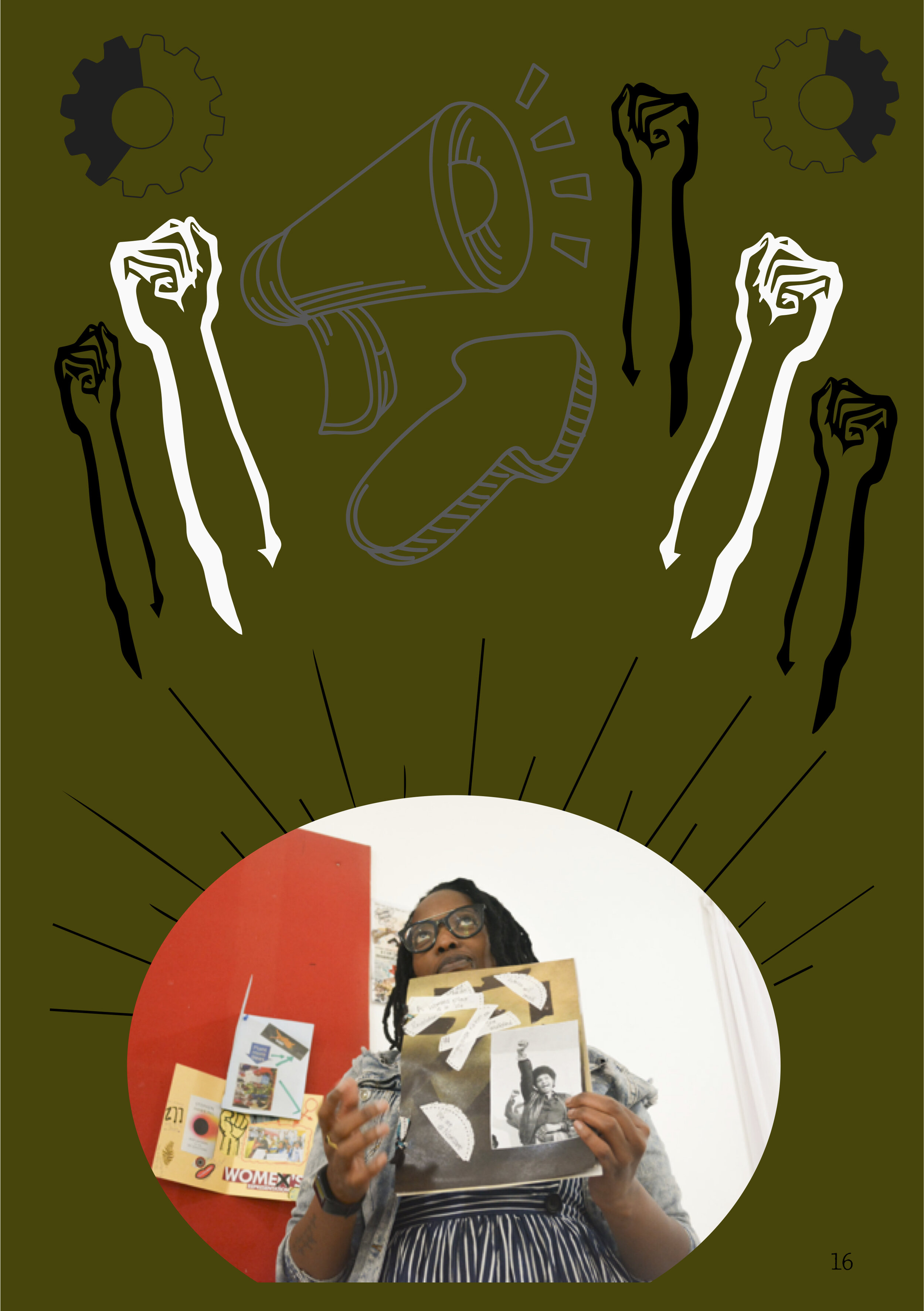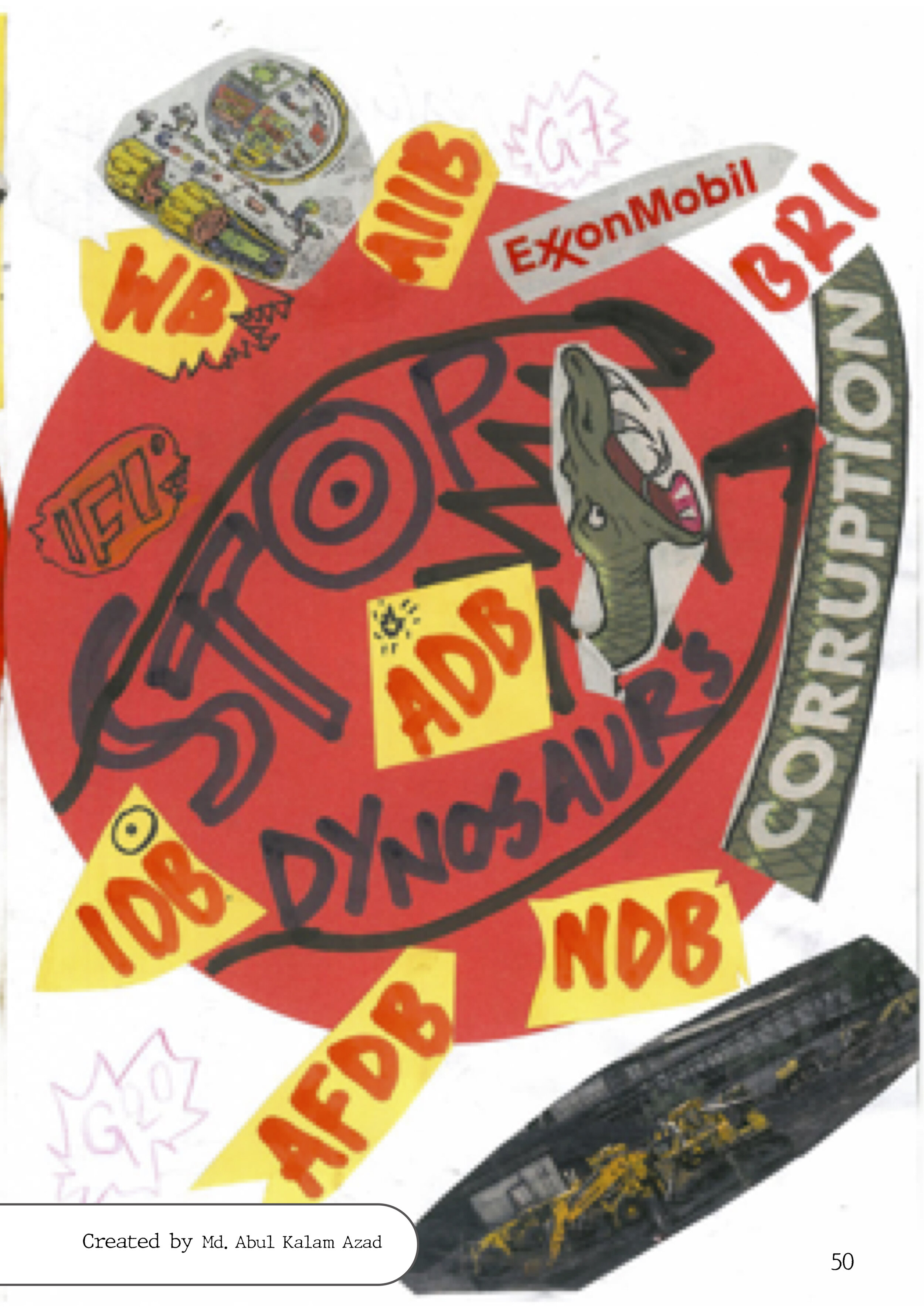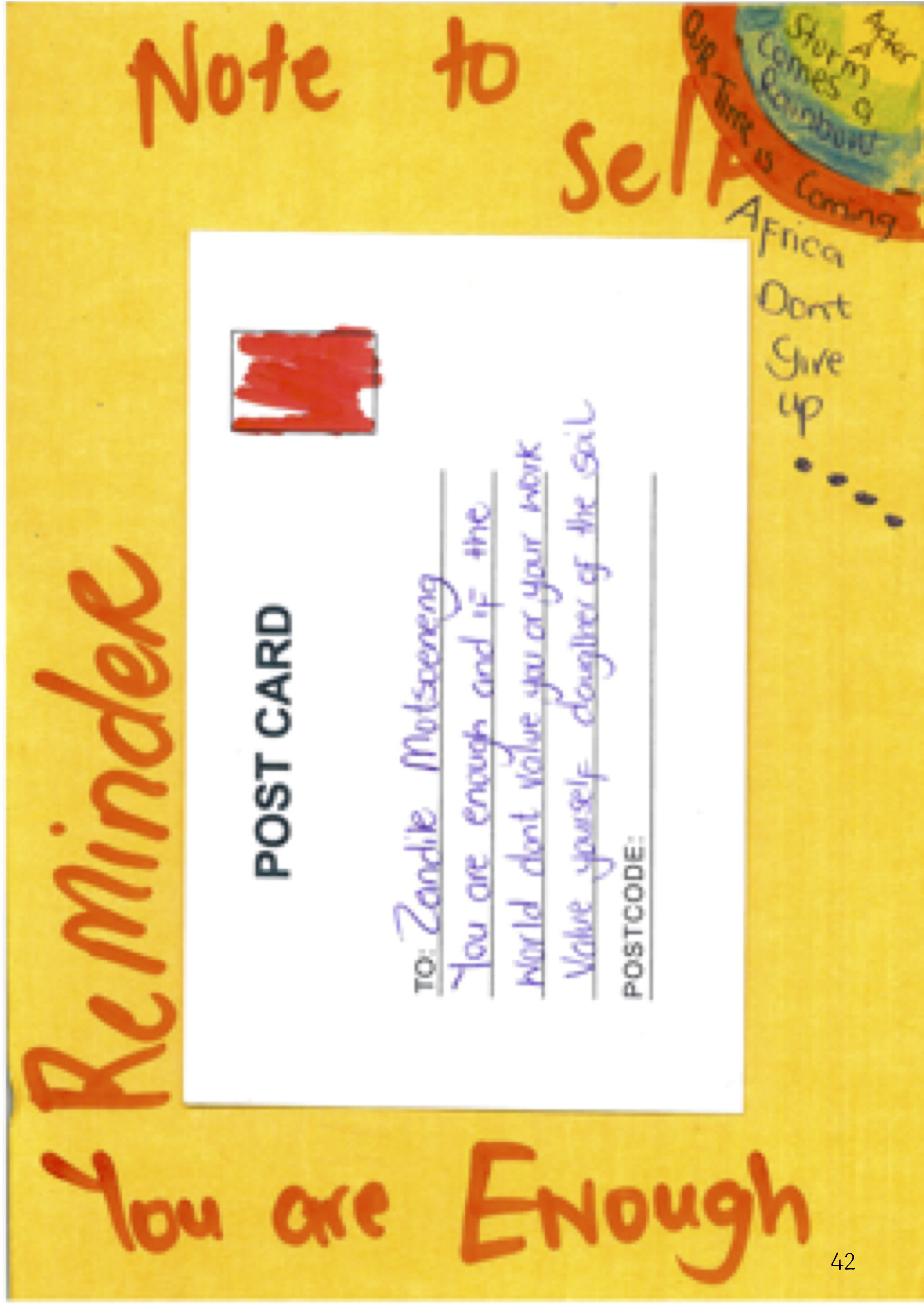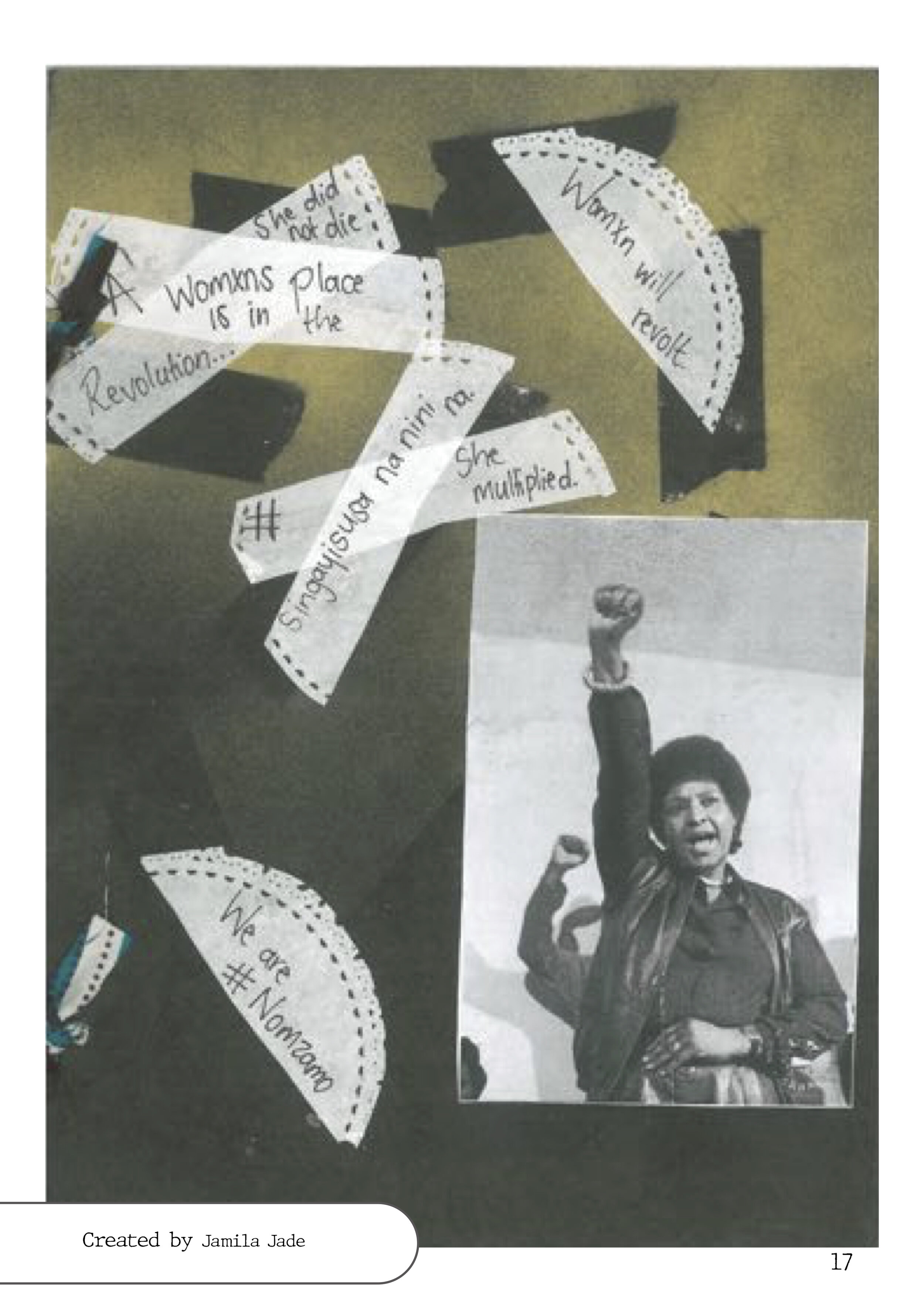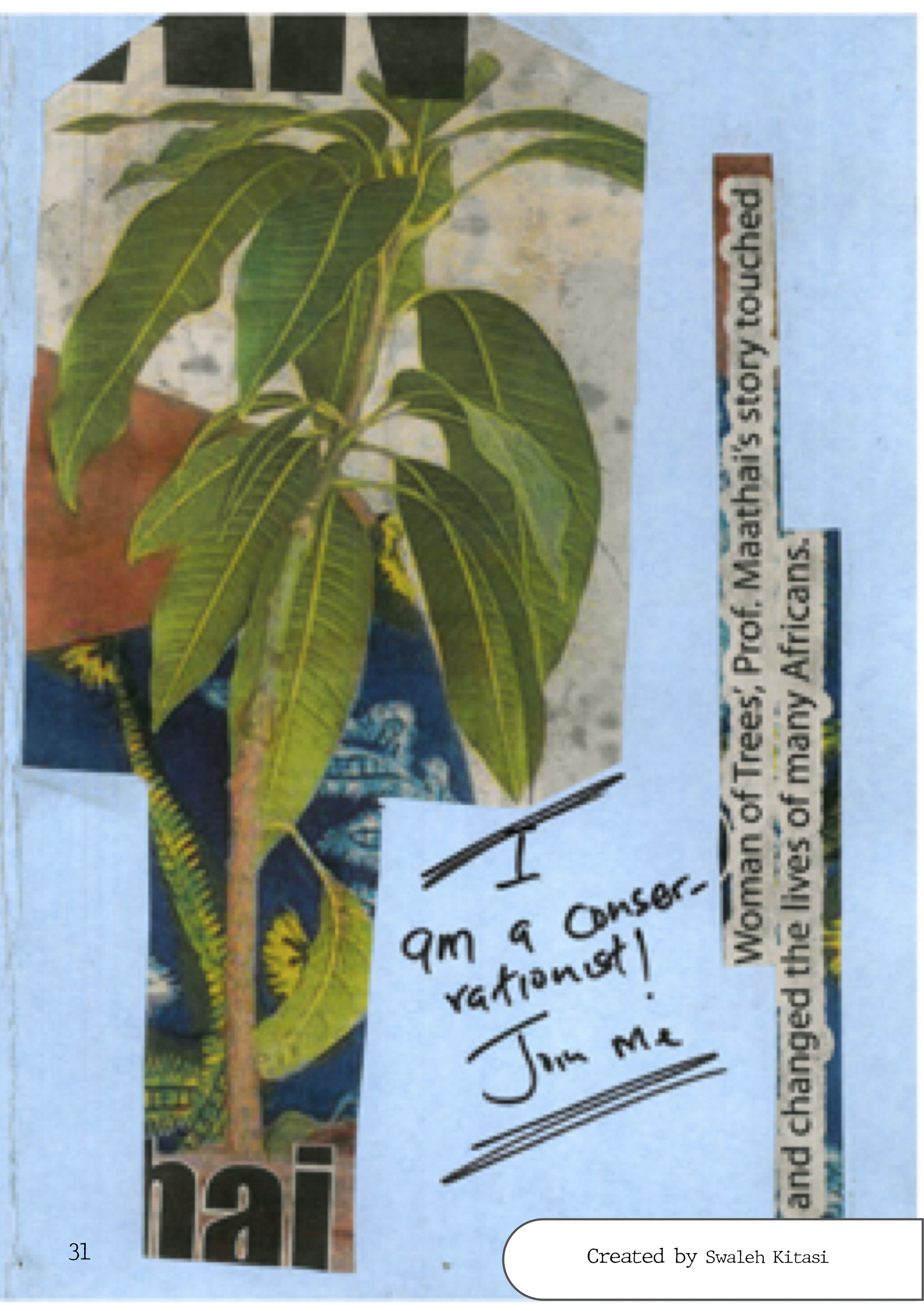Making a zine
A zine is a self- published, ‘home-made’ magazine that represents a particular community , put together using collage and scrapbooking. As a form, ‘the zine’ has its own radical history and international distribution networks, associated with subcultures such as sci fi, punk, feminism and anti-colonial movements, and trading on an anti-establishment ‘do-it-yourself’ philosophy. Notable examples are the early publications from the Fluxus and Situationist arts movements, 1960’s East African student magazine ‘Transition’ and the third wave feminist publication, ‘Riot grrl’.
“…movements used zines to subvert dominant and patriarchal ideologies through the sharing of lived experiences. At the core of the zine-making ethos are subversion, freedom of thought, and a DIY attitude. –
”
tool: Make a zine
Time: 2-4 hrs
Preparation:
Before the workshop, let people know that you will be making a zine together in response to the workshop themes encouraging them to bring materials that might be useful. You may also want to send them some links to zine projects online before the workshop. (See note for the team below for details).
Prepare the materials; paper, glue, magazines and scissors.
Allow at least 2 hours for the actual making.
Process:
Show the group some examples of zines in case it is unfamiliar to them; the zine is a well-recognised affordable way of producing a collaborative piece of work that can be easily shared on paper or online.
Agree the theme with the group and allocate 1 or 2 pages to each person. In Tanzania the activists suggested an open response to the previous days discussions and were given two pages each.
Using a collaging technique, the group sits together while they cut, stick, stitch, and/or illustrate their individual page or pages.
Participants share their work at the end of the exercise and assign someone to take a photo of each piece or scan it onto a computer, and collate the work.
Notes for the team
In Tanzania this exercise was led by Pamela Enyonu, a multimedia artist, who collated the zine for the team. She shared these notes with the team before our workshop.
Designing the Zine
Zines (pronounced “zeens,” shortened from the word “magazines”) are small, independent publications that come in the form of mini pamphlets or magazines.
Zines are easy and inexpensive to make, meaning that they have long been a counter-cultural vehicle for people to make their voices heard on issues that don’t often get touched on in the mainstream media.
Whether you want your zine to be a serious commentary on social issues or a light-hearted collection of cartoons, creating and distributing a zine is an incredibly rewarding experience that can jumpstart your creativity.
Content and Format
The most traditional method is analog, through either collaging or drawing. That means handwriting and drawing whatever you want the content of your zine to be. It can also mean gathering archival photos, Xeroxing images from books, cutting stuff out from magazines, and printing out text (or using a typewriter), then pasting them all together onto the page.
What shall we put in it?
We can put anything in it like;
Sketches
Drawings
Mini-comics
Match recipes with whimsical illustrations
Mix words with images and textures
Print lines of poetry
-S hare a manifesto
What format do we want our zine to take?
Do you want it to be able to fit in someone’s pocket, or are you looking to make something a bit more substantial?
Will it be a folded piece of paper, will it be stapled together, or will you have it printed and bound somewhere?
How will it look?
Think an overall color palette, font choices, and other design elements that will help the zine strike a particular mood, and feel cohesive.
Each participate will get 1 or 2 pages
Steps
Think about what you want on your pages
Think about highlights from the workshop
You can talk about them in a poem, drawing, scribble
Put the materials you are going use together
Grab a pen, cutter or scissor and get started
Let your personality shine.
Resources and further information:
See the Pushing Back research project zine and process on this site.
See https://theculturetrip.com/africa/south-africa/articles/cape-towns-freshest-zines-to-pay-attention-to/ for more Zine inspiration from South Africa.
http://www.archizines.com/About for example zines.
See https://issuu.com/clairesosienskismith/docs/how_to_make_a_zine for a short film description of how to make a zine.
https://twitter.com/hashtag/ZineFuturesEA?src=hash for ongoing zine projects.
https://www.britishcouncil.org/east-africa-arts/projects/nana/ZinePowaEA for more informationo Transition magazine.

